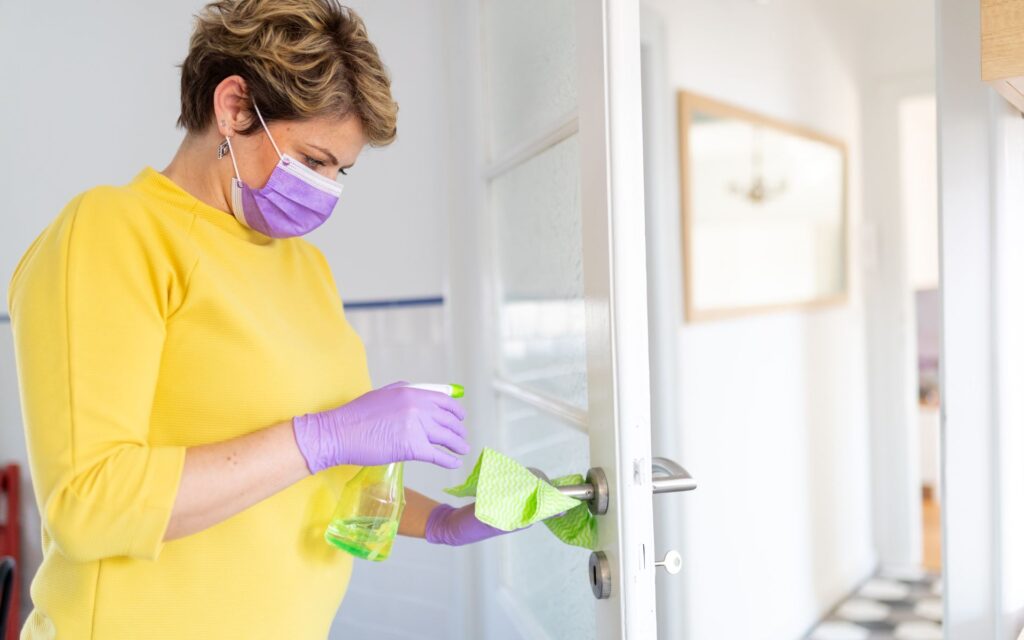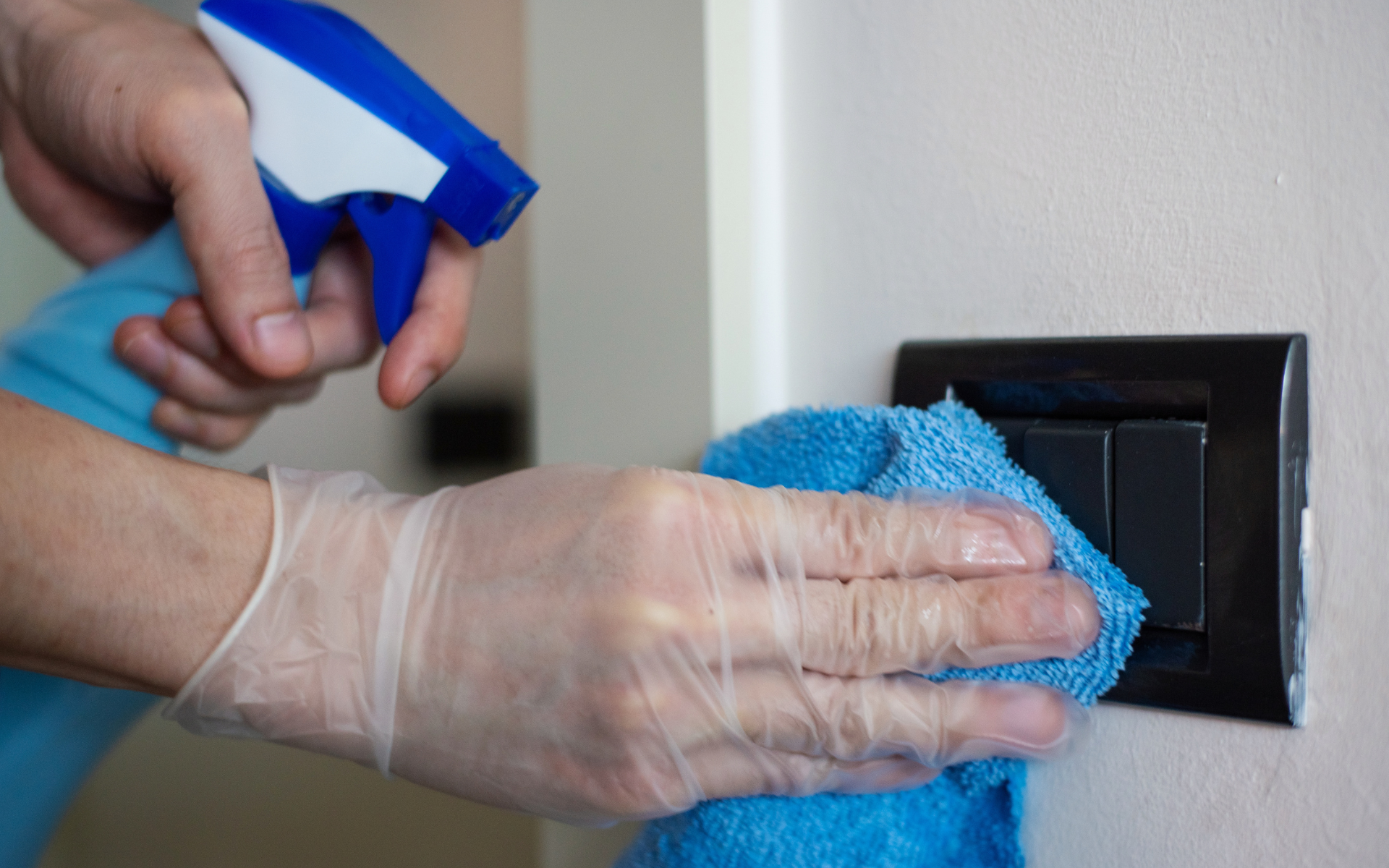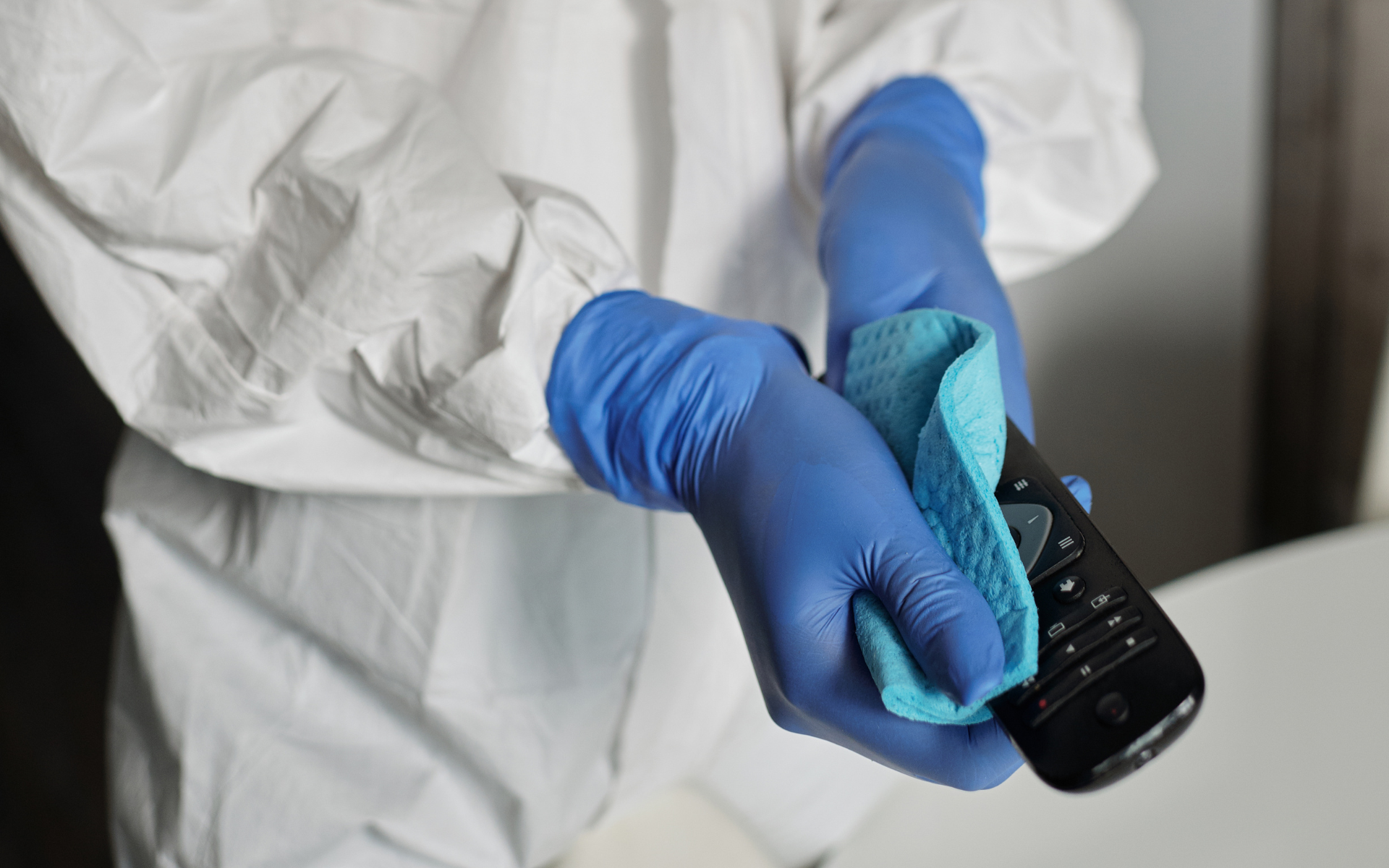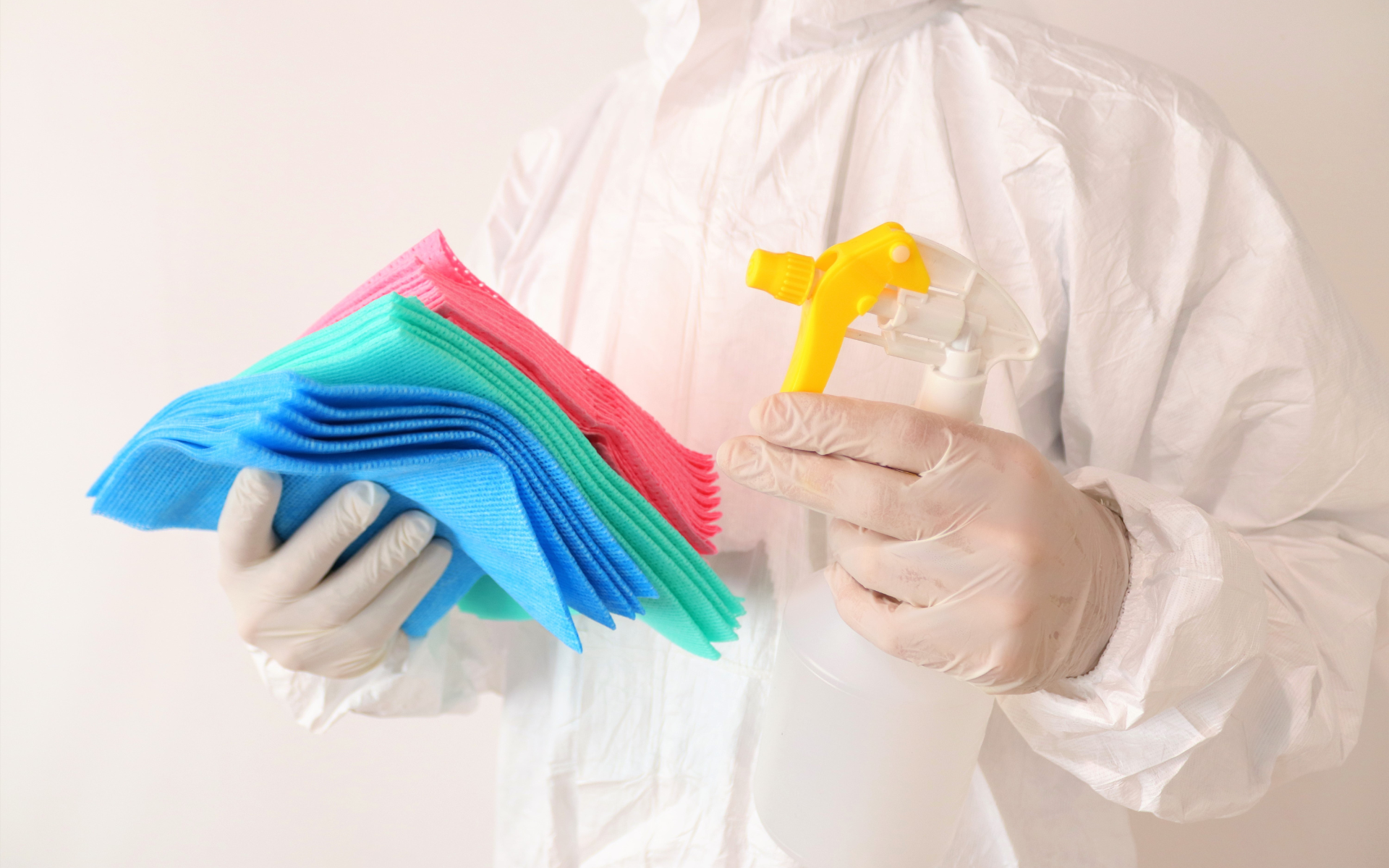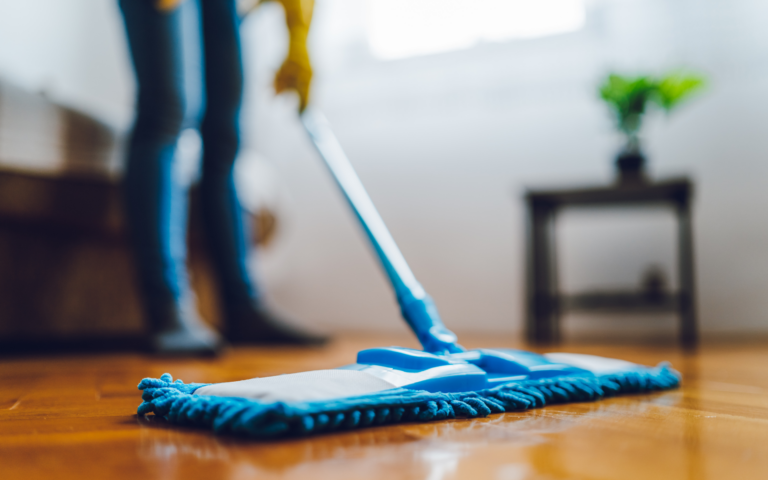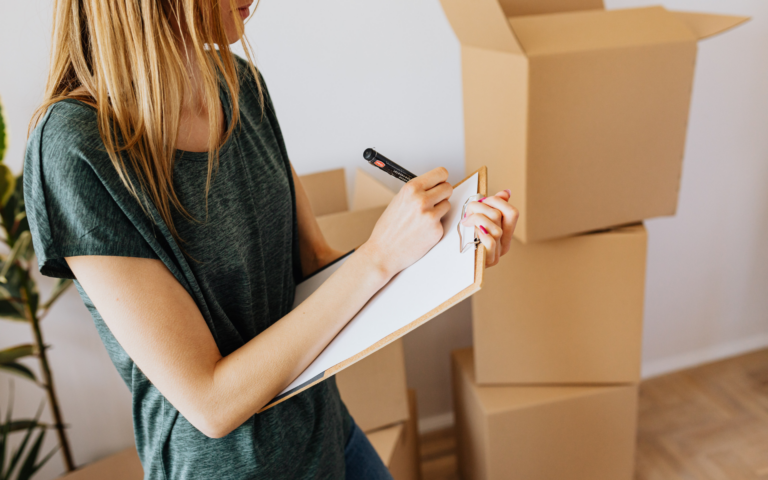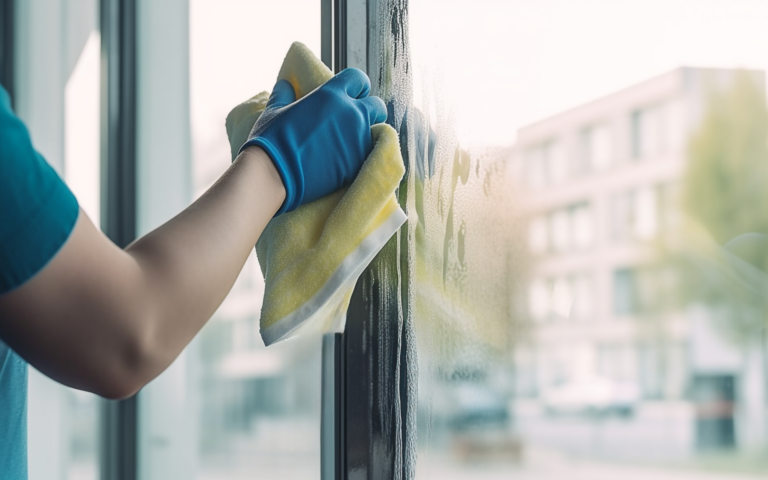Research from the Centers for Disease Control shows that 80% of infectious diseases spread through contaminated surfaces. The average person touches their face 23 times per hour, creating countless opportunities for germs to enter the body after contact with contaminated surfaces. From busy office spaces to family homes, certain surfaces demand extra attention due to constant use by multiple people throughout the day.
High-touch surfaces easily accumulate harmful bacteria, viruses, and other contaminants. Frequently disinfecting key areas helps control germ spread and protect health, especially amid viral outbreaks. Let’s examine the top 5 high-touch surface zones in homes and public places needing routine, frequent disinfection.
What are High-Touch Surfaces?
High-touch surfaces are areas of equipment, furnishings, and environments that humans contact frequently throughout the day. Examples of high touch, include door handles, light switches, phones, bathroom fixtures, railings, buttons, and countertops. Due to heavy hand contact, these surfaces easily become breeding grounds for microbes. You can hire cleaning services to help you clean high-touch surfaces, but if you want to learn more, keep reading.
Learning about essential high-touch areas helps you incorporate them into regular disinfecting protocols. Let’s explore methods and recommended frequencies for proper disinfection of shared equipment. Consistent sanitizing of key areas significantly reduces the spread of illnesses through shared surfaces.
#1: Doorknobs and Handles
Doorknobs and handles top the list of high-touch zones due to constant contact. Doors provide passage between spaces and floors, so handles get grasped by hundreds of hands daily. Research reveals something surprising: the average doorknob harbors up to 200 times more bacteria than a sink or toilet seat.
Rhinoviruses, influenza viruses, and Streptococci bacteria all thrive on door handles. The combination of continually renewed moisture and skin contact creates ideal conditions for microbe growth.
To limit contagion, disinfect doorknobs at a minimum twice daily. High-traffic settings like offices, retail shops, schools, and hospitals need even more frequent attention. EPA-approved disinfecting wipes or sprays work effectively for sanitizing knobs. Research shows natural cleaners like vinegar possess limited disinfectant ability, so stick to proven products.
For homeowners, making handle disinfection part of your daily routine pays off, especially during cold season. Public settings benefit from providing disinfecting wipes or solutions near doors, accompanied by clear signage promoting proper hand hygiene.
#2: Light Switches
Like doorknobs, light switches rank among the germiest high-touch hotspots in any building. As utility items are operated numerous times daily, light switches easily spread viruses, bacteria, and mold between users.
Research by Dr. Charles Gerba found the average light switch harbored 70 times more bacteria than a public toilet seat. Common microbes including fecal bacteria like E. coli are easily transmitted via light switches due to poor hand hygiene.
Controlling contagion requires disinfecting light switches at minimum once daily or after heavy use periods. Hospital-grade disinfectants containing at least 60% alcohol content or EPA-approved virucides kill pathogens effectively. Consider placing reminder signs encouraging people to sanitize hands after switch use.
Homeowners should make a habit of wiping switches weekly along with doorknobs using effective disinfecting wipes. In public settings, provide sanitizing supplies and post signage near switches prompting proper usage environmental cleaning, and hand hygiene.
#3: Mobile Phones and Remote Controls
Cell phones and remote controls provide perfect surfaces for microbes. Your phone travels everywhere, even to the bathroom, accumulating grime rapidly. The American Society of Microbiology found that typical phones collect dozens of bacterial strains along with viruses, fungi, and parasites.
Remote controls face similar challenges. Passed between family members or used by multiple people in hotels and waiting rooms, remotes rarely receive proper cleaning attention. The crevices between buttons trap dirt and germs, creating persistent contamination zones.
These devices pose infection risks through frequent face and hand contact. Influenza viruses spread readily through phones via droplets from coughing or sneezing onto screens. Fungal pathogens, including yeasts and molds, also inhabit these devices, potentially causing skin infections.
Protect your health by disinfecting phones and remotes frequently, especially during illness outbreaks. Use isopropyl alcohol or chlorine wipes suitable for electronics. Liquid sprays can harm devices, so stick to wipes. Phone case sanitizers offer convenient on-the-go solutions. Treat devices at least weekly and immediately after possible contamination events.
#4: Bathroom Surfaces
Due to the nature of activities, bathrooms naturally harbor microbes and require vigilant disinfection. Research indicates water faucets, flush handles, and stall door locks contain hundreds of times more bacteria than other public spaces. Viral pathogens like norovirus also spread rapidly via bathrooms.
Any frequently touched bathroom surface poses infection risks. Toilet seats, handles, faucet knobs, sinks, counters, toilets, and soap dispensers need thorough daily attention. Norovirus outbreaks or the spread of antibiotic-resistant organisms have been traced to poor bathroom hygiene repeatedly.
Homeowners should make bathroom sanitizing part of their deep cleaning routine with effective disinfectants like bleach solutions, Lysol wipes, or other EPA-approved products. Ensure surfaces get scrubbed and wiped down then dried to prevent pathogen spread.
In public restrooms, provide means for washing and sanitizing hands before and after use along with cleaning reminders. Bathrooms need professional disinfection at least daily in high-traffic settings. Any outbreak or gastrointestinal illness warrants immediate comprehensive sanitizing.
#5: Counters and Tables
Public counters like those in retail stores, cafeterias, and medical offices represent a crossroads for contagion. Customers congregate and place items on counters, facilitating microbe spread. Research shows staphylococci, streptococci and E. coli commonly contaminate public counters.
Tables in breakrooms, cafeterias, and conference rooms also harbor bacteria and viruses. A CDC study of office furniture found that 25% of tables were contaminated with MRSA bacteria. Norovirus easily spreads via shared tables and food prep areas.
Sanitize counters and tables between each customer or at regular intervals in lower traffic settings. Use commercial disinfectants and disposable towels then let surfaces completely air dry. For regular cleaning, counter sprays like Lysol provide convenience.
At home, wipe clean tables and counters after food prep, before prepping meals, and when visibly soiled. Pay particular attention after anyone is ill to contain the spread of viruses and gastrointestinal pathogens.
Risks of Contaminated Surfaces
Viruses like the flu, common cold, norovirus, and COVID-19 transmit rapidly via contaminated high-touch areas. Bacteria such as E. coli, salmonella, and staph also spread through contact. By cleaning and disinfecting high-touch zones routinely, communities and households limit harmful germ transmission.
Germy high touch areas pose multiple risks requiring vigilance:
- Illness transmission – Viruses, bacteria, and other microbes pass between people via contaminated surfaces. Doorknobs, phones, tables, etc act as intermediaries allowing pathogens to spread.
- Outbreak facilitation – Improper surface hygiene helps enable widespread outbreaks in communities, workplaces, schools, and healthcare settings. Norovirus, influenza, strep, salmonella, and more are transmitted through poor cleaning.
- Infection susceptibility – Exposure to certain microbes like staph and E. coli increases infection risks, especially for those with compromised immunity. Surfaces act as reservoirs exposing people repeatedly.
- Antibiotic resistance – Resistant organisms like MRSA thrive on frequently touched surfaces, gaining pathways to infect patients. Sanitizing controls the spread of dangerous superbugs.
- Allergic reactions – Allergens from mold, pet dander, and dust mites accumulate on surfaces and get disturbed, triggering allergic reactions in predisposed individuals.
- Indirect contact transmission – Contaminants pass from inadequately sanitized surfaces to hands to food/drinks increasing oral consumption risks.
- Skin infections – Staph, ringworm, and other pathogens colonize objects like gym equipment, spreading dermal infections with repeated skin contact.
Diligent surface disinfection provides a vital shield against these hazards associated with dirty high-touch areas. Consistent cleaning limits the chain’s risk of contagion.
Additional High Touch Zones
Beyond the top 5, many other public and home surfaces experience frequent human contact requiring sanitizing:
- Handrails – Stair railings in public venues enable people to spread contagion without realizing it. MRSA outbreaks have stemmed from contaminated rails.
- Shopping carts – Carts and baskets pick up germs from hundreds of hands daily. Norovirus spreads readily from improper cart cleaning between customers.
- Desks and chairs – Students and coworkers interchange desks and tables, cross-contaminating work surfaces. Also clean chair backs and armrests.
- Kitchen surfaces – Kitchens contain multiple high-touch areas including appliances, refrigerator door, cabinets, faucets, and cleaning tools. Disinfect sinks, sponges, and counters routinely.
- Fridge Handles – The proximity to food preparation makes fridge handle contamination particularly concerning.
- Electronics – Touch screens, keyboards, and mice used by multiple people exchange microbes with each use. This includes TV remotes, game controls, and more.
- Waiting rooms – Magazines, chairs, clipboards, and pens in waiting rooms harbor contagions from sick patients. Disinfect high-touch surfaces thoroughly.
- Handrails and bed controls – Healthcare facilities need diligent cleaning for bed rails, buttons, sinks, bed controls, and other items patients touch frequently.
- Elevator Buttons – Every person entering or leaving a floor touches these buttons, creating intense contamination potential throughout the day.
- Fitness equipment – Heavy use by sweaty patrons easily spreads bacteria and fungi via surfaces like weights, machines, and mats. Post-cleaning rules.
- Toys – In childcare and classroom settings, plush toys and smooth educational tools passed between kids grow germy rapidly.
- ATM keypads and payment terminals – Every PIN entry and card transaction leaves behind germs from countless users.
- Vending machine buttons – Pressed by hungry hands throughout the day, vending machine buttons accumulate layers of bacteria, food residue, and viruses.
Assigning responsibility for disinfecting these additional high-touch areas limits contagion spread and promotes wellness and overall health among users.
Best Practices For Disinfecting High-Touch Surfaces
Follow these tips for safe, effective disinfection of high-touch areas:
- Use EPA-approved disinfectants – Choose recognized antimicrobial products like Lysol, Clorox, or CDC-recommended cleaners suited for the surface material. Avoid natural cleaners lacking disinfectant abilities.
- Read instructions – Follow product instructions for proper dilution ratios, contact time needed to kill germs, and any precautions. Never mix cleaning agents.
- Focus on contact areas – Target areas prone to handling like knobs, lift buttons, grips, controls, handles, tops, and edges. Pathogen density concentrates in these zones.
- Establish routine – Make disinfecting high-touch points a standard routine according to usage frequency. For example, daily for heavy public use items or weekly in-home settings.
- Wear gloves and PPE – Use protective gloves and equipment like goggles when handling concentrated disinfectants. Prevent chemicals from contacting the skin or eyes.
- Use disposable towels/wipes – Dirty rags or sponges spread rather than eliminate germs. Use a disposable paper towel, microfiber cloth, or wipes to scrub surfaces cleaner.
- Allow proper drying time – Many disinfectants require surfaces to remain wet for specific periods to kill pathogens effectively. Don’t rush the process.
With proper techniques and EPA-approved disinfecting agents, high-touch areas stay optimally sanitized for healthier occupants.
Disinfection Services for High-Touch Areas
Disinfection has become essential for maintaining healthy environments in today’s world. Expert cleaning services reduce illness transmission by up to 80% in workplace settings, leading to fewer sick days and higher productivity. They eliminate dangerous pathogens that standard cleaning might miss, including antibiotic-resistant bacteria and persistent viruses. EPA-registered disinfectants penetrate biofilms and reach microscopic crevices where germs hide.
Every type of business benefits from commercial cleaning, from busy medical offices and schools to hotels and shops. It’s about creating spaces where people feel safe and comfortable, knowing that someone’s taking care of the details that matter for their health.
Bottomline
Healthcare settings should follow established cleaning policies and maintain routine practices including hand hygiene to decrease infection risks. For homes and offices, using EPA-approved disinfectants daily helps stop germs from spreading effectively.
Investing in quality cleaning products and following smart practices makes all the difference. A few extra minutes each day spent wiping down door handles, light switches, and other frequently touched surfaces can protect your health and the health of those around you. The key is making disinfection a daily habit rather than an occasional task. Consistency creates the healthiest environments.
Need help keeping your high-touch surfaces properly disinfected? Next Day Cleaning serves homes and businesses with professional cleaning services that target germs where they hide. Call Next Day Cleaning now because clean surfaces mean healthier spaces for everyone.


